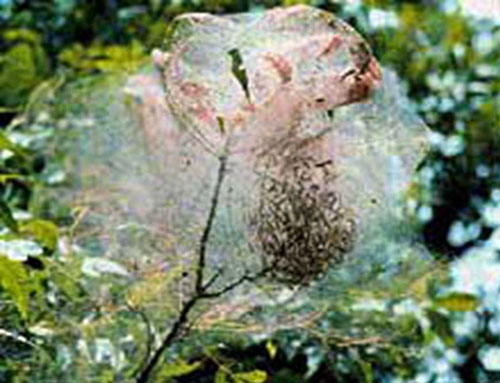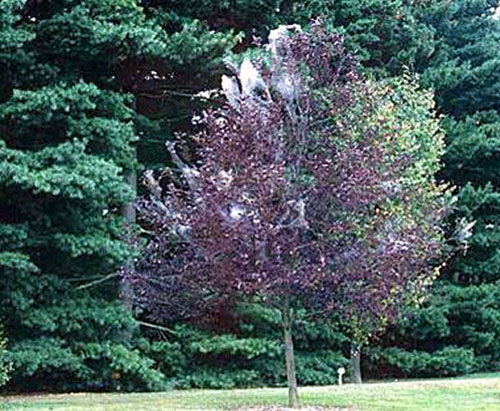Webbed tents on branch tips are caused by fall webworm
Editor’s note: This article is from the archives of the MSU Crop Advisory Team Alerts. Check the label of any pesticide referenced to ensure your use is included.
If you see lots of webbing covering the branch tips of some of the trees in your neighborhood, it's probably fall webworm. Walnut, hickory, ash, and crabapples are some of the favorite targets, but many other types of trees can also serve as an adequate food source. The small yellowish-gray webworm caterpillars hide in the webs during the day. Some trees have actually been defoliated from having a tent on nearly every branch. But in most cases, each tree has three or four tents. They look bad, but cause little harm to the trees. Tree health is not affected unless more than 50 percent of the foliage is consumed in the spring or early summer. Late summer and fall defoliation have little effect on trees and they will look just fine next spring. Pruning-out infested branches is a good strategy if you can reach the branches. Spraying the foliage around tents with B.t., Sevin, Orthene, or a pyrethroid insecticide will prevent further feeding injury, but the old tent will remain visible. We have many natural parasites and pathogens of fall webworm that will bring these infestations under control. Places with lots of fall webworm this year may not have much next year. Outbreaks usually last two or three years.

Fall webworm.

Fall webworm at a distance.
Photo credit: Dave Shetlar, Ohio State University.
Dr. Smitley's work is funded in part by MSU's AgBioResearch.



 Print
Print Email
Email


